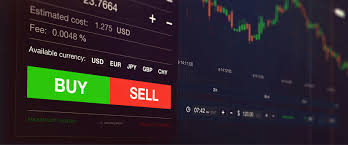
Becoming a Forex Trading Software Developer
The Forex market is one of the largest and most liquid markets in the world, with trillions of dollars traded every day. To navigate this complex environment, many traders rely on sophisticated trading software systems. As a Forex trading software developer, you will play a crucial role in creating these tools, enhancing traders‘ abilities to analyze market trends, execute trades, and manage their portfolios effectively. forex trading software developer Trading Vietnam is an example of a platform benefiting from advanced trading algorithms and user-friendly interfaces.
Understanding the Role
A Forex trading software developer is responsible for designing and implementing software solutions that facilitate trading activities in the Forex market. This includes creating algorithms for automated trading systems, developing charting tools, and building user interfaces that allow traders to execute their strategies efficiently. The primary objective is to provide clients with robust, reliable, and innovative trading solutions that meet market demands.
Necessary Skills and Technologies
To succeed as a Forex trading software developer, you need a diverse skill set that encompasses both programming and financial knowledge. Here are some essential skills and technologies you’ll need to master:

- Programming Languages: Proficiency in languages such as C++, C#, Python, and Java is often required. These languages are commonly used for building trading platforms and backend systems.
- Algorithm Development: Strong knowledge of algorithms is critical. You will need to develop efficient algorithms for trade execution and risk management.
- Financial Markets Understanding: A solid understanding of how Forex markets operate, including trading strategies and risk management practices, is essential.
- Data Analysis: Skills in data analysis and statistics are crucial for developing strategies based on historical performances and market trends.
- API Integration: Familiarity with APIs, especially from brokerage firms, is needed to integrate trading functionalities into your software.
- User Interface Design: Knowledge of user experience (UX) design principles will assist in creating intuitive interfaces that enhance trader interaction with the software.
The Development Process
The development process for Forex trading software often involves several stages:
- Requirement Gathering: Collaborate with stakeholders, including traders and business analysts, to understand their needs and requirements for the software.
- Design: Create a blueprint for the software, detailing architecture, user interface, and algorithms that will be used.
- Development: Write the code and build the software according to the design specifications. This includes both front-end and back-end development.
- Testing: Conduct rigorous testing to identify and fix bugs, and ensure the system performs reliably under different market conditions.
- Deployment: Launch the software for users, ensuring the infrastructure is capable of handling the expected load and performance requirements.
- Maintenance and Updates: Regularly update the software to fix issues, improve performance, and keep up with evolving market dynamics and user demands.
Tools and Technologies
Several tools and frameworks are commonly used in Forex trading software development:

- MetaTrader 4/5: Popular platforms among traders, these allow for custom script programming through MQL4/5, enabling automated trading capabilities.
- Trading APIs: APIs from different brokers like OANDA, IG, or Interactive Brokers facilitate seamless integration for trading functionalities.
- Databases: Knowledge of database management systems like MySQL and PostgreSQL is useful for storing transactional and historical data.
- Version Control: Version control systems, notably Git, are essential for managing code changes and collaborating with other developers.
Challenges in Forex Trading Software Development
Like any other field in software development, Forex trading software has its own unique challenges that developers face:
- Market Volatility: The Forex market can be highly volatile, necessitating robust software that can handle extreme conditions without failure.
- Performance Optimization: Traders require low-latency software since even milliseconds can affect the profitability of trades.
- Security: Ensuring the security of trading software is paramount. You must implement secure coding practices to protect sensitive financial data.
- Regulatory Compliance: Staying compliant with financial regulations such as KYC (Know Your Customer) and AML (Anti-Money Laundering) is crucial for operational legitimacy.
Conclusion
Becoming a Forex trading software developer requires a unique blend of programming skills, financial knowledge, and problem-solving abilities. This field offers exciting opportunities to work at the cutting edge of technology and finance, providing innovative solutions to traders worldwide. With the right skills and dedication, you can make a significant impact in the Forex trading landscape and support traders‘ successes in one of the most dynamic markets globally.